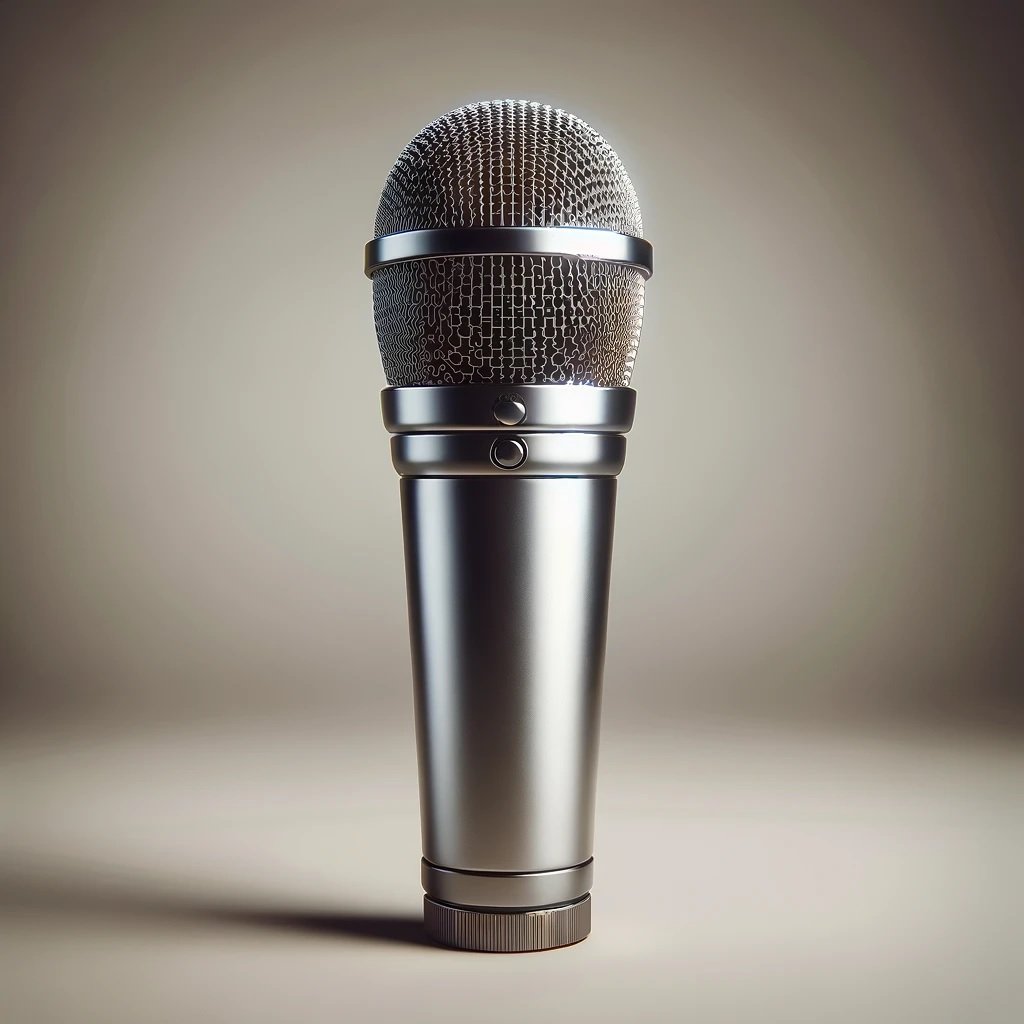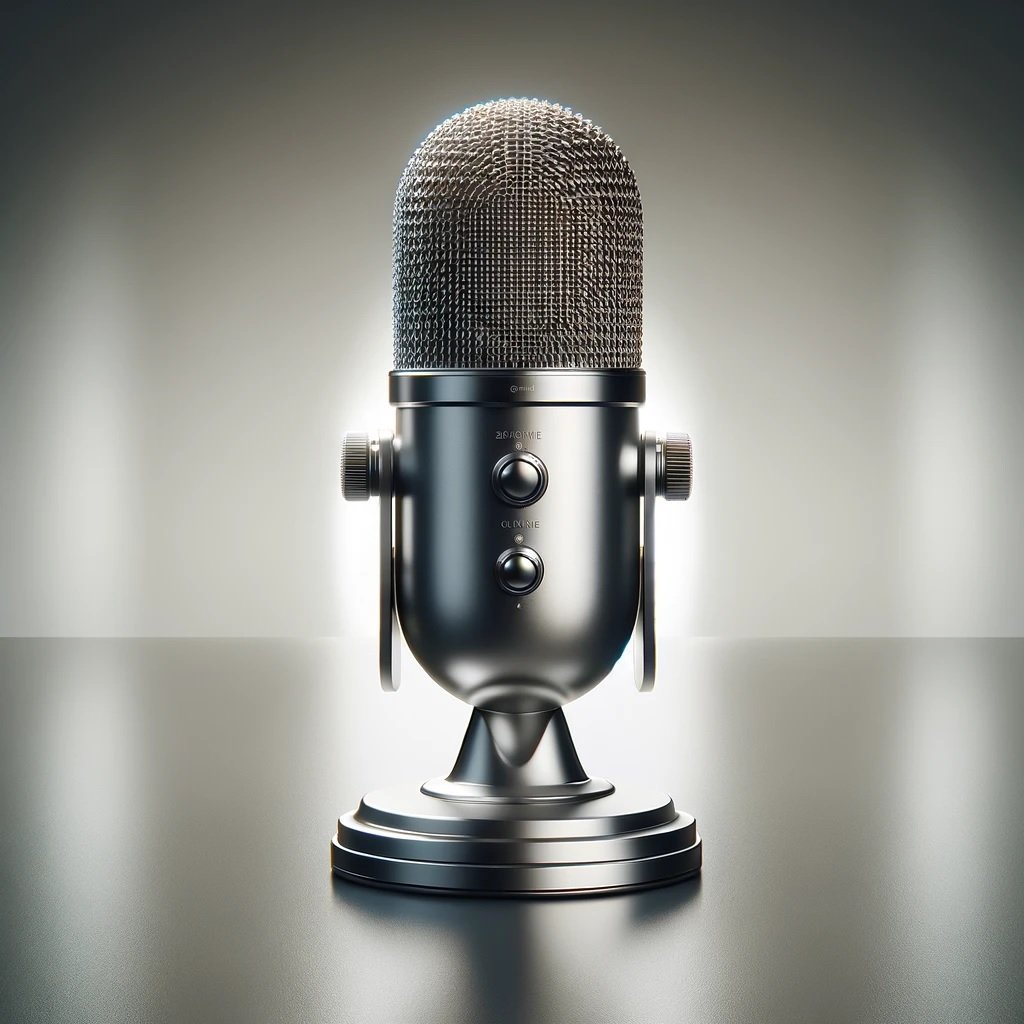Unlocking the Potential of Omnidirectional Microphone: A Comprehensive Guide
Introduction
In the sector of audio recording, capturing crystal-clear sound is paramount. Whether you’re a content creator, podcaster, musician, or clearly a person who appreciates exquisite audio, having the proper device could make all of the distinction. One such critical device within the arsenal of sound experts is the omnidirectional microphone.
Understanding Omnidirectional Microphones
They are designed to capture sound equally from all guidelines. Unlike their unidirectional counterparts, which focus on sound from a particular direction, omnidirectional microphones provide a wider pickup sample, making them perfect for recording in diverse environments.

Why Choose an Omnidirectional Microphone?
There are several reasons why an omnidirectional microphone might be the proper choice for you:
Versatility
These microphones excel in quite a few recording scenarios, from capturing group conversations to recording ambient sounds.
Ease of Use
With their huge pickup sample, these microphones require minimum setup and positioning, making them ideal for novices and seasoned professionals alike.
Natural Sound Reproduction
Thanks to their omnidirectional pickup pattern, these microphones offer a natural and immersive audio enjoy, faithfully reproducing the ambiance of any environment.
Eliminates the Need for Multiple Microphones
In some situations, these can update a couple of microphones, simplifying your recording setup and decreasing clutter.
Detail
Rode NT-USB Mini
Compact layout with studio-excellent sound
Built-in pop filter for decreasing plosive sounds
Plug-and-play operation for quick setup
Compatible with Windows, Mac, and iOS devicesIdeal for podcasting, streaming, and voiceover programs
Blue Yeti
Tri-capsule array for versatile recording alternatives
Multiple pick-up styles, consisting of omnidirectional
Onboard advantage manipulation and headphone tracking
Adjustable stand for customizable positioning
Suitable for recording vocals, instruments, and organization conversations
Audio-Technica ATR3350
Lavalier microphone for fingers-free recording
Long cable for flexible placement options
Foam windscreen for reducing undesirable noise
Battery-powered operation for prolonged use
Compatible with smartphones, DSLRs, and audio recorders
Shure MV88+
Compact microphone with iOS compatibility
Adjustable stereo width for versatile recording
Companion app for customized sound manipulation
Five DSP preset modes for exclusive recording eventualities
Lightning connector for direct connection to iPhone and iPad
Sennheiser AMBEO Smart Headset
In-ear headphones with integrated omnidirectional microphones
Three-D audio recording for immersive soundscapes
Transparent listening to characteristic for blending real-world sounds with audio playback
Ear adapter sets for customized consolation and suit
Compatible with iOS gadgets for on-the-move recording

Key Features
360-Degree Pickup Pattern
With a complete-circle pickup pattern, this microphone makes sure that no sound is omitted.
Wide Frequency Response
These microphones boast an extensive frequency response range, allowing them to, as they should, seize numerous sorts of audio, from deep bass to crisp highs.
High Sensitivity
These microphones are exceptionally touchy, selecting up even the subtlest nuances in sound.
Durable Construction
Built to withstand the pains of recording sessions, these are often made from robust materials for lengthy-lasting durability.
Versatile Compatibility
Whether you are the use of a computer, cellphone, or audio recorder, it offers versatile compatibility with a range of devices.
Portability
Many of these microphones feature a compact and lightweight layout, making them smooth to move and install anywhere you pass.
Feature with Table
When considering these microphones, it’s important to apprehend their key functions. Here’s a breakdown of what to look for:
| Feature | Description |
|---|---|
| Pickup Pattern | 360-degree pickup pattern for capturing sound from all directions |
| Frequency Response | Wide frequency response range to accurately reproduce various types of audio |
| Sensitivity | High sensitivity for capturing subtle nuances in sound |
| Durability | Sturdy construction to withstand rigorous use and environmental conditions |
| Compatibility | Compatibility with various recording devices and accessories, ensuring versatility |
| Portability | Compact and lightweight design for easy transport and setup |
User Experience
Users throughout extraordinary fields have shared their reports with these, highlighting their versatility and reliability. Content creators locate them crucial for shooting immersive audio for podcasts, YouTube films, and stay streams. Musicians recognize their potential to faithfully reproduce acoustic performances, taking pictures of the whole atmosphere of a room.
Additionally, educators discover it useful for recording lectures and presentations, making sure there is clear and audible playback for students. Many users praise the versatility and comfort of omnidirectional microphones.
Whether recording interviews, live performances, or ambient sounds, customers respect the microphone’s capability to capture natural and immersive audio experiences.

Pros and Cons
Pros
- Versatile pickup pattern
- Natural sound reproduction
- Ideal for recording group conversations
- Captures ambient sounds effectively
- Minimal need for precise positioning
- Suitable for immersive audio recordings
- Eliminates the need for multiple microphones in some scenarios
- Easy to use for beginners
- Excellent for capturing room acoustics
- Well-suited for outdoor recording
Cons
- Susceptible to picking up background noise
- It may require noise reduction techniques in post-production
- Less directional control compared to unidirectional microphones
- Limited suitability for noise-critical environments
- Can be sensitive to handling noise
- Not ideal for recording in noisy environments
- Potential for phase cancellation in multi-microphone setups
- Limited effectiveness for isolating sound sources
- Requires careful placement to avoid unwanted noise pickup
- Less effective for close-miking applications
Competitors in the Market
In each of the UK and USA markets, several of these microphones compete for the eye of consumers. Some high-quality competitors include:
1-Rode NT-USB Mini
2-Blue Yeti
3-Audio-Technica ATR3350
4-Shure MV88+
5-Sennheiser AMBEO Smart Headset
Comparison with Competitors
Here’s a detailed comparison of the key features offered by each competitor:
| Competitor | Pickup Pattern | Frequency Response | Sensitivity | Durability | Compatibility | Portability |
|---|---|---|---|---|---|---|
| Rode NT-USB Mini | Omnidirectional | 20Hz – 20kHz | High | Durable | Various | Compact |
| Blue Yeti | Omnidirectional | 20Hz – 20kHz | High | Sturdy | Various | Portable |
| Audio-Technica ATR3350 | Omnidirectional | 50Hz – 18kHz | High | Lightweight | Various | Portable |
| Shure MV88+ | Omnidirectional | 20Hz – 20kHz | High | Robust | iOS devices | Compact |
| Sennheiser AMBEO Smart Headset | Omnidirectional | 15Hz – 22kHz | High | Durable | iOS devices | Portable |
Conclusion
In conclusion, omnidirectional microphones provide a versatile solution for taking pictures and great audio in diverse recording situations. Their extensive pickup sample, herbal sound duplicate, and ease of use make them popular among content material creators, musicians, and audio lovers.
By providing information about their capabilities, execs, cons, and user studies, you can make a knowledgeable decision on the quality omnidirectional microphone that fits your wishes.
Also read About: Neumann Microphone
Also read About: Blue Microphone
Also read About: Wireless Microphone
Also read About: PInk Microphone
FAQs
-
Can I use an omnidirectional microphone for outdoor recording?
Yes, these microphones are appropriate for outside recording, accurately capturing ambient sounds.
-
Are omnidirectional microphones compatible with smartphones?
Many omnidirectional microphones offer compatibility with smartphones, making them versatile options for cell recording.
-
How do omnidirectional microphones compare to unidirectional microphones?
These microphones seize sound from all guidelines, whereas unidirectional microphones are aware of sound from a selected path.
-
Can omnidirectional microphones pick up background noise?
Yes, these may additionally pick out background noise. However, techniques which include noise reduction can mitigate this problem.
-
What is the typical frequency response range of omnidirectional microphones?
The frequency reaction range of this varies; however, it generally covers the audible spectrum from 20Hz to 20kHz.
-
Are omnidirectional microphones suitable for recording music?
Yes, omnidirectional microphones can capture tune performances with fidelity, especially in acoustic environments.
-
Do omnidirectional microphones require phantom power?
It depends on the microphone version. Some omnidirectional microphones require phantom strength, and others can operate on battery electricity.
-
Can omnidirectional microphones be used for live streaming?
Yes, many omnidirectional microphones are suitable for live streaming, presenting clean and immersive audio for viewers.
-
How do I prevent omnidirectional microphones from picking up unwanted noise?
Proper microphone placement and the usage of noise discount techniques can help decrease undesirable noise pickup.
-
Are omnidirectional microphones suitable for recording interviews?
Yes, omnidirectional microphones are perfect for recording interviews and shooting the voices of each interviewer and interviewee.
-
Can omnidirectional microphones be used for ASMR recording?
Yes, omnidirectional microphones are famous amongst ASMR artists for shooting immersive and spatial audio reports.
-
Are omnidirectional microphones suitable for field recording?
Yes, omnidirectional microphones excel in field recording applications, capturing the herbal ambience of outside environments.
-
How do I choose the right omnidirectional microphone for my needs?
Consider elements which includes meant use, price range, compatibility, and preferred features whilst selecting an omnidirectional microphone.
-
Can omnidirectional microphones be used for professional audio production?
While omnidirectional microphones are suitable for many professional packages, dedicated studio microphones may additionally offer extra specialized functions and better fidelity.
-
Are omnidirectional microphones more sensitive to wind noise compared to unidirectional microphones?
Omnidirectional microphones can be susceptible to wind noise, but using a windscreen or foam cowl can assist in mitigating this trouble.
